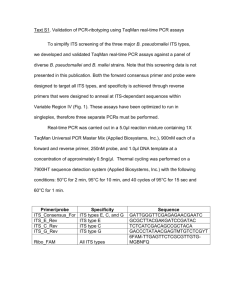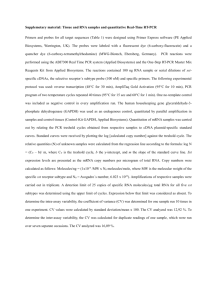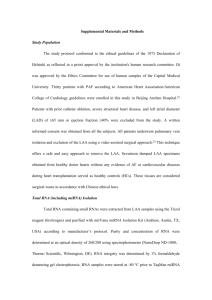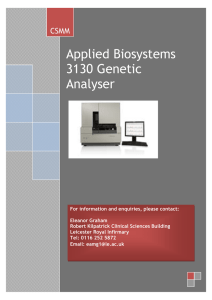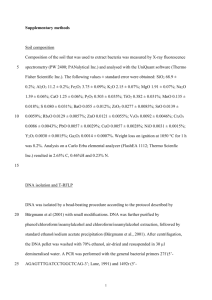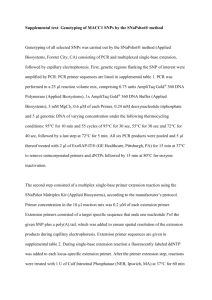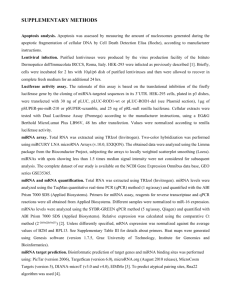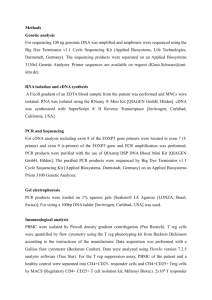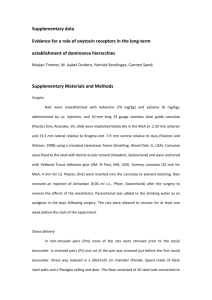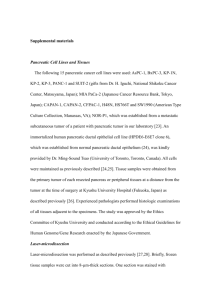Supplemental methods
advertisement
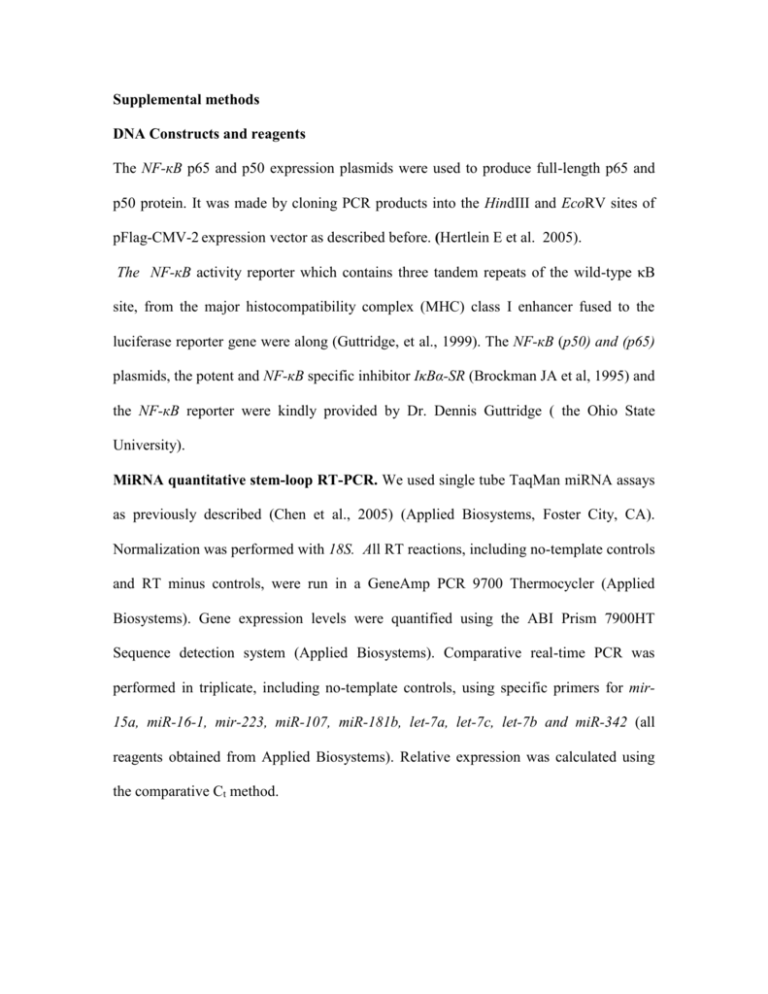
Supplemental methods DNA Constructs and reagents The NF-кB p65 and p50 expression plasmids were used to produce full-length p65 and p50 protein. It was made by cloning PCR products into the HindIII and EcoRV sites of pFlag-CMV-2 expression vector as described before. (Hertlein E et al. 2005). The NF-кB activity reporter which contains three tandem repeats of the wild-type κB site, from the major histocompatibility complex (MHC) class I enhancer fused to the luciferase reporter gene were along (Guttridge, et al., 1999). The NF-кB (p50) and (p65) plasmids, the potent and NF-кB specific inhibitor IκBα-SR (Brockman JA et al, 1995) and the NF-кB reporter were kindly provided by Dr. Dennis Guttridge ( the Ohio State University). MiRNA quantitative stem-loop RT-PCR. We used single tube TaqMan miRNA assays as previously described (Chen et al., 2005) (Applied Biosystems, Foster City, CA). Normalization was performed with 18S. All RT reactions, including no-template controls and RT minus controls, were run in a GeneAmp PCR 9700 Thermocycler (Applied Biosystems). Gene expression levels were quantified using the ABI Prism 7900HT Sequence detection system (Applied Biosystems). Comparative real-time PCR was performed in triplicate, including no-template controls, using specific primers for mir15a, miR-16-1, mir-223, miR-107, miR-181b, let-7a, let-7c, let-7b and miR-342 (all reagents obtained from Applied Biosystems). Relative expression was calculated using the comparative Ct method. Taqman Real Time PCR. Comparative real- time RT-PCR was performed for Bcl-2 and Ras in triplicate. Primers and probes were obtained from applied Biosystems (Foster City, CA). Gene expression levels were quantified using ABI Prism 7900 Sequence detection system (Applied Biosystems). Relative and fold difference expression were calculated using the Ct and 2(-delta Ct) method after normalization with 18S. Cell transfection. NB4 cells were seeded at 5 X 106 and transfected using nucleoporation (AMAXA, Kit V, and program T-019) with 10 ug of miR-16-1 or let-7a-3. NB4 cells transfected with scrambled oligonucleotides (negative control 1, AMBION) were used as controls. NF-kB binding site prediction. To predict NF-кB binding sites in the promoter of this cluster, we collected experimentally verified NF-кB binding site sequences in literature and built positional weight matrix for NF-кB with consensus sequence of GGGRATTYCC. We obtained genomic locations of mature miRNA let-7a-3 sequences from miBase (Grocock et al, 2006) and extracted upstream 5000 bps of both human let7a-3 (has-let-7a-3) and chicken let-7a-3 (gga-let-7a-3) mature miRNAs as promoter sequences of two orthologous miRNA genes. We predicted NF-кB binding sites in the promoter regions of two orthologous miRNA genes by using MATCH (Kel et al, 2003) program with positional weight matrix described above and then aligned the predicted NF-кB binding sites with Meta (Blanco et al, 2006) to select the NF-кB binding sites conserved between human and chicken orthologous miRNA gene (let-7a-3) pairs.
